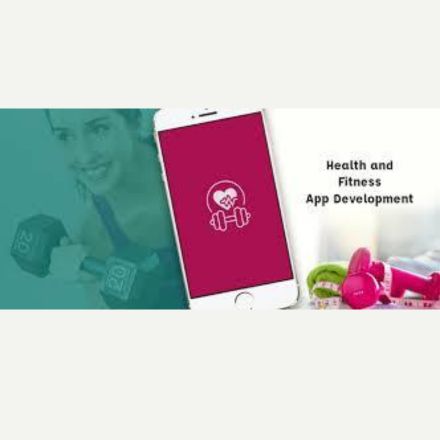The mobile app development landscape is evolving at an unprecedented pace, driven by advancements in artificial intelligence, cross-platform compatibility, and cloud-native architectures. For software development companies aiming to stay competitive in 2025, selecting the right tools and frameworks is no longer just about coding efficiency—it’s about future-proofing solutions, enhancing user experiences, and streamlining workflows.
This article explores the most impactful tools and frameworks shaping mobile app development in 2025, focusing on three critical areas: cross-platform frameworks, AI-driven development tools, and backend as a service (BaaS) platforms.
1. Cross-Platform Frameworks: Bridging Platforms Seamlessly
Cross-platform development has dominated the mobile app industry for years, but 2025 brings refinements that blur the lines between native and hybrid performance. These frameworks empower software development companies to build apps for iOS, Android, and even emerging platforms (e.g., foldables, AR/VR devices) from a single codebase, reducing costs and accelerating time-to-market.
Flutter 4.0: The UI Powerhouse
Google’s Flutter remains a leader, thanks to its customizable widgets, hot-reload functionality, and growing ecosystem. By 2025, Flutter 4.0 introduces AI-powered design suggestions, enabling developers to generate UI code from Figma mockups automatically. Its integration with Firebase for real-time databases and machine learning APIs makes it a holistic solution for apps requiring dynamic content and personalization.
Flutter’s Dart language now supports WebAssembly (Wasm), enabling near-native performance on browsers and IoT devices. For companies prioritizing brand consistency across platforms, Flutter’s pixel-perfect rendering engine ensures uniform visuals, even on foldable screens and wearables.
React Native Reimagined: The JavaScript Giant
Meta’s React Native has overcome past performance limitations with a redesigned architecture in 2025. The new "Fabric" rendering engine eliminates bottlenecks in thread management, while TurboModules allow lazy loading of native code, reducing app startup times by 40%. React Native’s partnership with Microsoft’s TypeScript team has also solidified its position, offering stricter type-checking and error detection during development.
What sets React Native apart in 2025 is its low-code integration. Platforms like Microsoft PowerApps now embed React Native components, enabling citizen developers to prototype apps while handing off complex logic to professional teams. For software development companies, this hybrid approach balances speed and scalability.
Kotlin Multiplatform: The Native Alternative
For projects demanding closer-to-metal performance, Kotlin Multiplatform (KMP) has emerged as a favorite. By 2025, KMP’s maturity allows developers to share business logic across iOS, Android, and web apps while writing platform-specific UI code. Its interoperability with Swift and JavaScript ensures seamless collaboration in mixed-codebase environments.
KMP’s integration with Jetpack Compose (Android) and SwiftUI (iOS) enables declarative UI development, reducing boilerplate code. Companies like Netflix and Airbnb have adopted KMP for its ability to unify backend and frontend teams, making it ideal for enterprise-scale apps requiring strict compliance and performance.
2. AI-Driven Development Tools: Coding Smarter, Not Harder
Artificial intelligence is no longer a buzzword—it’s a foundational pillar of mobile app development. In 2025, AI-driven development tools are revolutionizing how apps are built, tested, and optimized. These tools help software development companies automate repetitive tasks, predict user behavior, and deliver hyper-personalized experiences. TensorFlow Lite 3.0: On-Device Intelligence
Google’s TensorFlow Lite has become indispensable for embedding machine learning models directly into mobile apps. The 2025 iteration supports federated learning, allowing apps to train models on user devices without compromising privacy. For example, a fitness app can personalize workout recommendations based on local data without uploading sensitive health metrics to the cloud.
TensorFlow Lite’s new Model Maker Studio simplifies creating custom models using drag-and-drop interfaces. Developers can fine-tune pre-trained models for tasks like image recognition or natural language processing, reducing dependency on data scientists. This democratization of AI empowers startups and enterprises alike to compete in data-driven markets.
GitHub Copilot X: The AI Pair Programmer
GitHub Copilot, powered by OpenAI’s GPT-5 in 2025, has evolved from a code-completion tool to a full-fledged AI pair programmer. It now understands project-specific context, suggesting entire feature implementations, writing unit tests, and even debugging by analyzing crash reports. For mobile developers, Copilot X generates platform-specific code snippets for Flutter, Swift, or Kotlin, slashing development time.
Copilot’s integration with CI/CD pipelines is a game-changer. It automatically reviews pull requests for security vulnerabilities and performance issues, aligning with best practices like OWASP Mobile Top 10. For software development companies, this means fewer post-launch patches and higher client satisfaction.
Figma++: AI-Enhanced Prototyping
Figma++ (a hypothetical evolution of Figma) leverages generative AI to turn wireframes into production-ready code. By 2025, designers can describe app features in natural language (e.g., “a TikTok-style video feed with gesture controls”), and Figma++ generates corresponding UI components and animations for Flutter or React Native.
This tool bridges the gap between design and engineering teams, ensuring pixel-perfect implementations. Its real-time collaboration features, combined with version control powered by Git, make it ideal for remote teams working across time zones.
3. Backend as a Service (BaaS): Scaling Effortlessly
Modern mobile apps demand robust backend infrastructure for authentication, databases, and real-time updates. In 2025, backend as a service (BaaS) platforms abstract server management, allowing developers to focus on frontend innovation. These platforms are essential for software development companies building scalable apps without hiring dedicated DevOps teams.
Firebase 2025: The All-in-One Suite
Google’s Firebase continues to dominate with its integrated suite of tools. The 2025 version introduces Firebase Genkit, an AI-powered toolchain that automates tasks like database schema optimization and A/B testing. For instance, Genkit can analyze user engagement data to suggest optimal server configurations, reducing latency by 30%.
Firebase’s real-time database and Cloud Firestore now support offline-first architectures, critical for apps in regions with unreliable internet. Its seamless integration with Flutter and Angular makes it a top choice for startups and enterprises alike.
AWS Amplify Studio: Enterprise-Grade Scalability
AWS Amplify Studio has matured into a comprehensive BaaS platform, offering one-click deployment for serverless functions, GraphQL APIs, and machine learning models. In 2025, Amplify’s AI assistant predicts traffic spikes and auto-scales resources, ensuring apps remain responsive during viral moments.
For enterprise mobile apps, Amplify’s compliance certifications (GDPR, HIPAA) and encryption-at-rest features are indispensable. Its partnership with Figma++ allows developers to import UI designs and automatically provision required backend services, accelerating MVP development. Supabase: The Open-Source Challenger
Supabase, often dubbed “the open-source Firebase,” has gained traction in 2025 with its transparent pricing and self-hosting options. Its Edge Functions now run on a global CDN, reducing API latency to under 50ms. Supabase’s real-time database leverages WebSockets for instant updates, making it ideal for collaborative apps like project management tools.
For software development companies prioritizing data ownership, Supabase’s ability to deploy on private clouds or Kubernetes clusters is a standout feature. Its SQL-based architecture also appeals to teams transitioning from monolithic systems to microservices.
Conclusion: Future-Proofing Development in 2025
The mobile app development tools of 2025 are defined by their ability to merge efficiency with innovation. Cross-platform frameworks like Flutter and Kotlin Multiplatform enable code reuse without sacrificing performance, while AI-driven tools like GitHub Copilot X and TensorFlow Lite democratize advanced capabilities. Meanwhile, backend as a service platforms such as Firebase and AWS Amplify eliminate infrastructure headaches, letting developers focus on user-centric features.
For software development companies, adopting these tools isn’t just about keeping up—it’s about leading in an era where app quality, speed, and intelligence define market success. By investing in these frameworks, teams can deliver scalable, secure, and engaging apps that resonate with 2025’s tech-savvy users.






.jpg)



.jpg)

